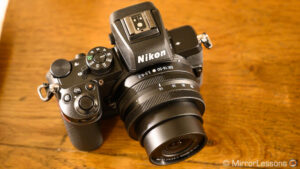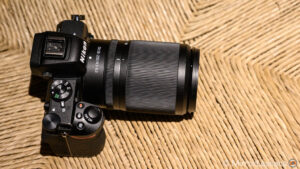Canon and Nikon have been direct competitors for many years and have dominated the DSLR industry for decades. In 2018, they started to compete in the mirrorless segment (alongside Sony) with the release of their respective full frame systems.
This rivalry has now expanded to the mirrorless APS-C segment. The Canon EOS M line-up has been around for some time, whereas Nikon has only just joined the crowd with the release of the Z50.
In this article, we take a look at how Nikon’s first DX mirrorless camera compares to Canon’s latest EOS M release, the M6 mark II.
What the Z50 and M6 II have in common:
- no in-body image stabilisation
- 3.5mm mic input but no headphone output
- built-in flash
- WiFi and Bluetooth
Nikon Z50 Comparison Previews
Z50 vs Z6 – Z50 vs A6100 vs A6400 – Z50 vs EOS M6 II – Z50 vs X-T30
Ethics statement: The following is based on our hands-on with the Z50 at the press event and official information concerning the M6 II. We were not asked to write anything about these products, nor were we provided with any sort of compensation. Within the article, there are affiliate links. If you buy something after clicking the link, we will receive a small commission. To know more about our ethics, you can visit our full disclosure page. Thank you!
1. Design
The Nikon Z50 is bigger than the M6 II. The front grip and the EVF that sticks out on top make the Nikon camera appear even larger.
- Z50: 126.5 x 93.5 x 60mm, 450g
- M6 II: 119.6 x 70.0 x 49.2 mm, 408g
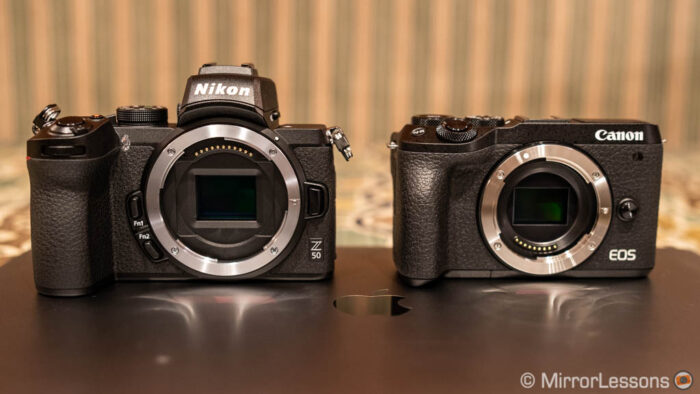
The deeper grip of the Z50 is immediately noticeable and provides a more solid hold when working with the camera. The absence of an EVF allows the Canon to have more compact dimensions.
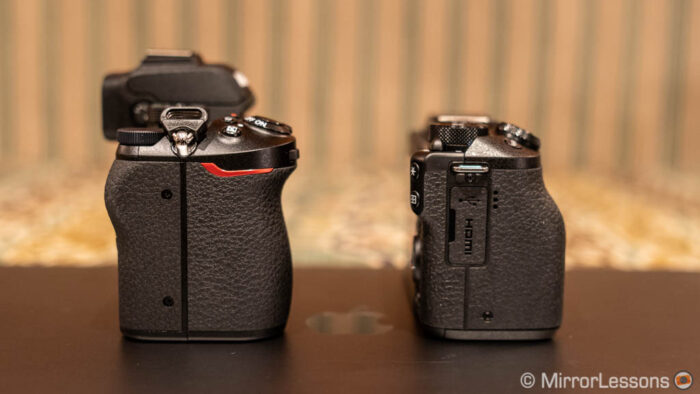
In terms of controls, both products have twin dials for the exposure and a shooting mode dial on top. The front dial is embedded into the front grip on the Nikon, whereas both dials are on the top plate of the Canon.
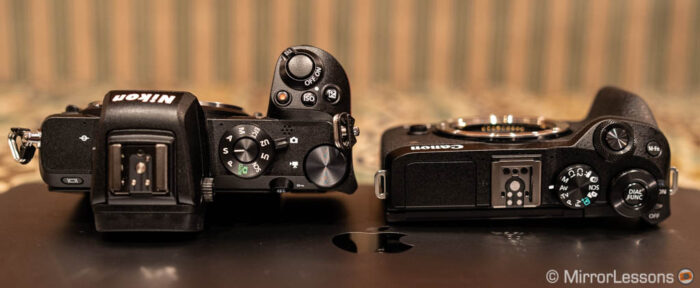
The M6 II has a nice AF/MF toggle on the rear but the Nikon has extra buttons including the two Fn keys on the front.
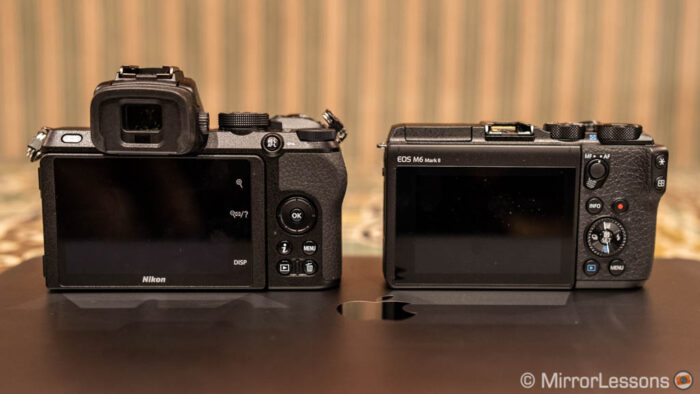
There is no weather sealing on the M6 II whereas Nikon claims some degree of dust and moisture resistance.
2. Viewfinder
One of the major differences between these two models is the lack of an electronic viewfinder on the EOS M6 II. There is the optional EVF-DC2 EVF (0.39-in 2,360k dots) that attaches to the hot-shoe and it is included with the camera and kit lens bundle.

The Z50 on the other hand has a built-in EVF with a 0.39-in panel, 2.36M dots of resolution and a magnification of 0.68x.
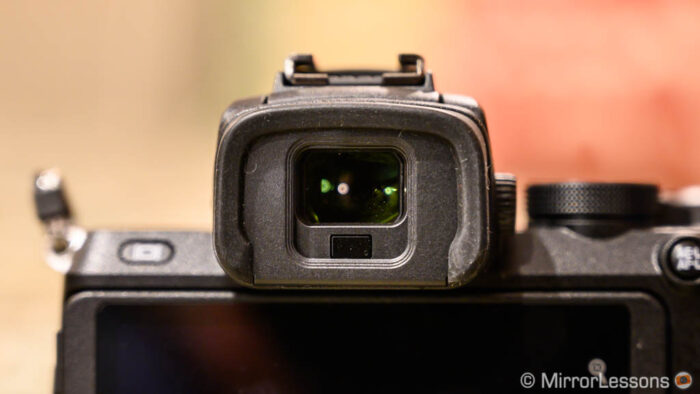
3. LCD screen
Both cameras feature an LCD screen with 180º tilting capabilities to facilitate selfie shooting and videos.
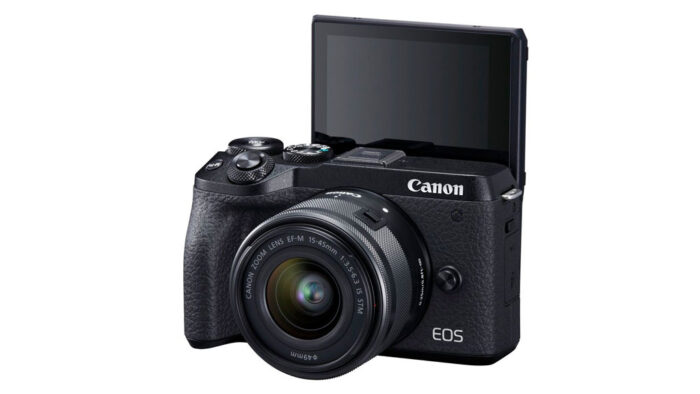
Nikon and Canon have chosen opposite directions for the mechanism: on the Z50, it tilts down whereas on the M6 II it swivels up.
The Nikon LCD is also larger (3.2 inches instead of 3-in) but the resolution is the same (1.04M dots).
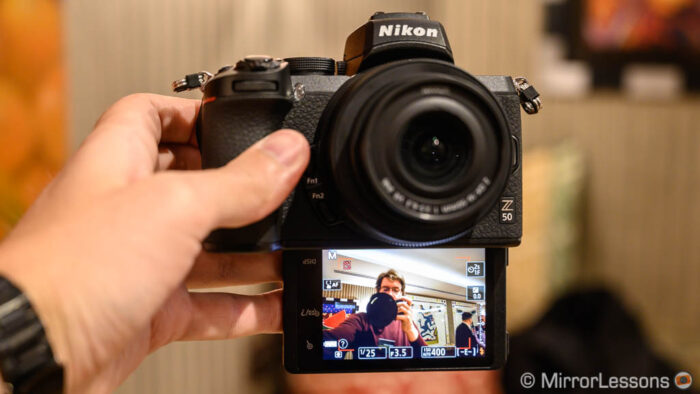
The Z50 screen is useful because it allows you to attach an accessory to the hot-shoe such as a microphone. The downside however is that it becomes useless on a tripod.
Both screens are touch sensitive and allow you to perform a number of operations on the camera including moving the focus point and navigating the menu.
4. Sensor
The Z50 features an APS-C CMOS sensor with 20.9MP. The M6 II has more resolution – 32.5MP to be precise – which is a significant difference. It is the first APS-C sensor to pass the 30MP cap.
The Nikon has a wider ISO range that goes from 100 to 51,200, and the extended values go up to 204,800 ISO.
The M6 II goes from ISO 100 to 25600, with push values up to 51,200 ISO.
5. Autofocus
The Z50 has 209 phase and contrast detection points. They cover approximately 90% of the sensor area.
The M6 II uses Canon’s Dual Pixel CMOS AF with up to 5481 points when the single point mode is used. (In multi mode it uses 143 points.) Dual Pixel CMOS AF is a phase detection based system.
Both cameras feature face and eye detection and can work in Single and Continuous autofocus.
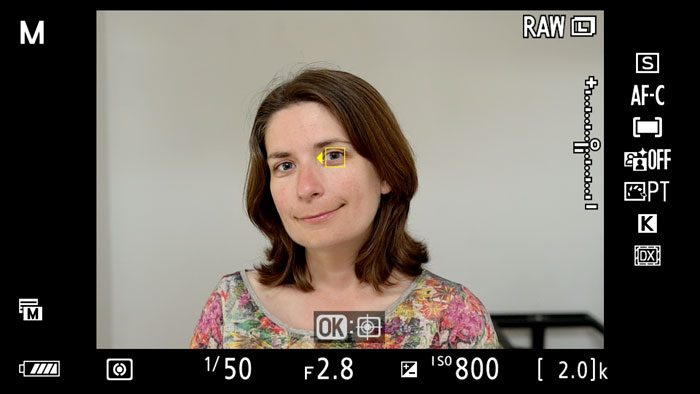
The M6 II has a minimum sensitivity of -5Ev with a 1.4 aperture, which is similar to the -4Ev with a f2 aperture on the Z50. Note however that the latter works when activating the Low Light AF mode. Otherwise the default rating is -2Ev.
6. Video
Both cameras can record 4K video up to 30fps without cropping the sensor.
In Full HD, they can record up to 120fps but the Canon does so without recording sound, disables the autofocus and applies a crop on the sensor.
The ISO sensitivity is the same when recording movies: 100 to 25600.
The Z50 can record a 4K video in Time-Lapse mode.
7. Continuous shooting speed
The EOS M6 II can shoot up to 14fps with continuous autofocus, whereas the Z50 is a bit slower at 11fps.
The Canon has a Pre-burst mode that saves images before you fully depress the shutter button.
The M6 II uses UHS-II SD cards which have a faster writing speed than the UHS-I type of the Nikon Z50. The Canon can shoot at full speed for 54 frames in JPEG or 23 frames in RAW. The buffer specifications for the Z50 haven’t been disclosed.
8. Shutter speed
Both cameras have a maximum speed of 1/4000s with the mechanical shutter. With the electronic shutter (silent mode) activated, the M6 II goes up to 1/16000s.
9. Lenses
The Nikon Z-mount system began in 2018. Nikon launched the first two DX lenses (16-50mm f3.5-6.3 and the 50-250mm f4.5-6.3) with the Z50 so the choice is limited for now. Of course there is always the option of using full frame lenses designed for the Z-mount on the camera. The current selection includes fast primes that can work well on the Z50 too.
The EOS M series was launched in 2012 so the lens selection is much richer. One important thing to keep in mind however is that unlike Nikon, the mirrorless APS-C and full frame systems use different mounts. For this reason you cannot attach Canon’s RF lenses to the M6 II.
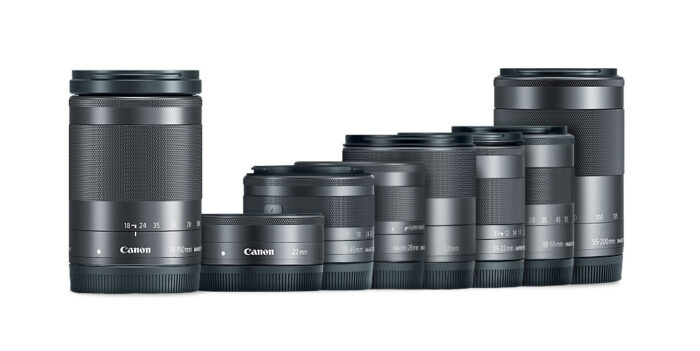
Both systems allow you to adapt DSLR lenses but keep in mind that on compact cameras such as these, the ergonomics will be somewhat compromised.
10. Price
The Z50 was launched with the following retail prices:
- $860 / £850 / €1000 body only
- $1000 / £990 / €1150 with 16-50mm kit lens
The M6 II is available for:
- $850 / £870 / €970 body only
- $1100 / £1120 / €1260 with 15-45mm kit lens and EVF-DC2
Conclusion
Nikon Z50 Comparison Previews
Z50 vs Z6 – Z50 vs A6100 vs A6400 – Z50 vs EOS M6 II – Z50 vs X-T30
The Z50 is a competitive product from Nikon whose ergonomics are its main selling point. The large front grip really makes a difference. The M6 II on the other hand is characterised by its more compact, modular design.
In terms of performance, the main difference is the sensor resolution. Although the 32MP chip on the M6 II may currently lead the way in terms of megapixel count, the Z50 20MP sensor might come out on top in the realm of low light performance.
One current advantage of the Canon is the wider selection of native lenses designed for the APS-C format. However you can’t attach the Canon RF full frame lenses to APS-C bodies, so in the long run, the Z-mount will offer more versatility because it is used for both formats (DX and FX).
Check price of the Nikon Z50 on
B&H Photo
Check price of the Canon EOS M6 II on
Amazon | Amazon UK | B&H Photo | eBay


